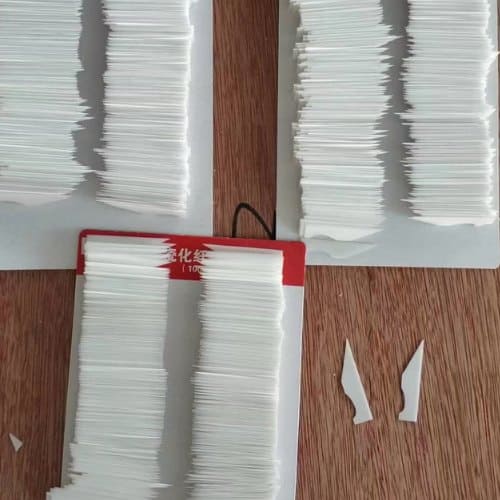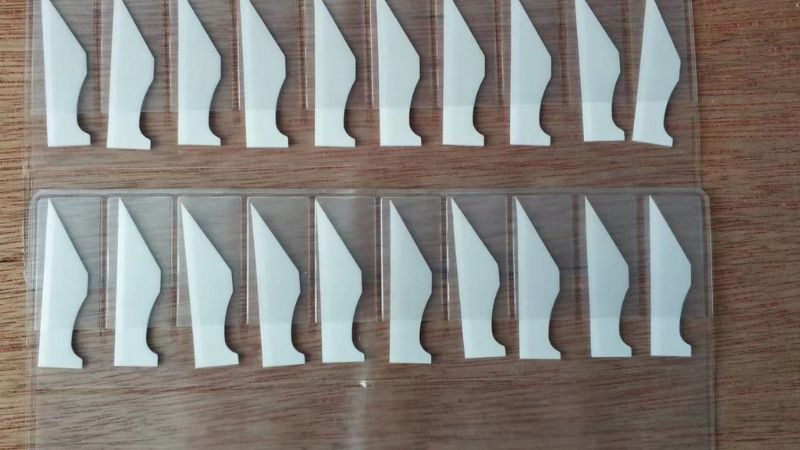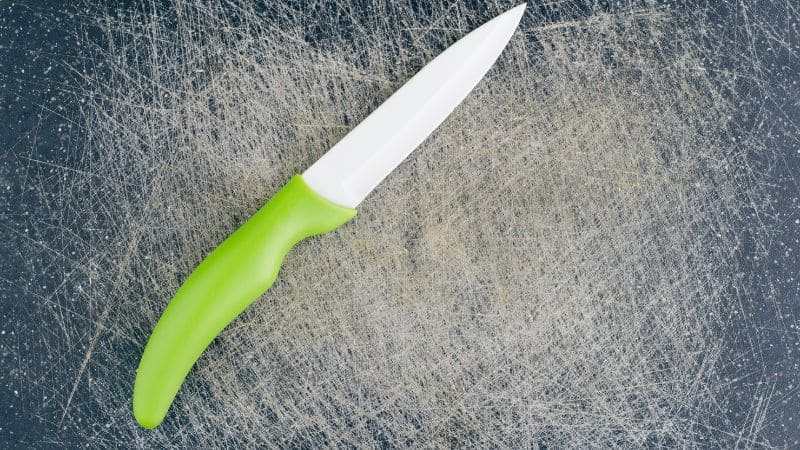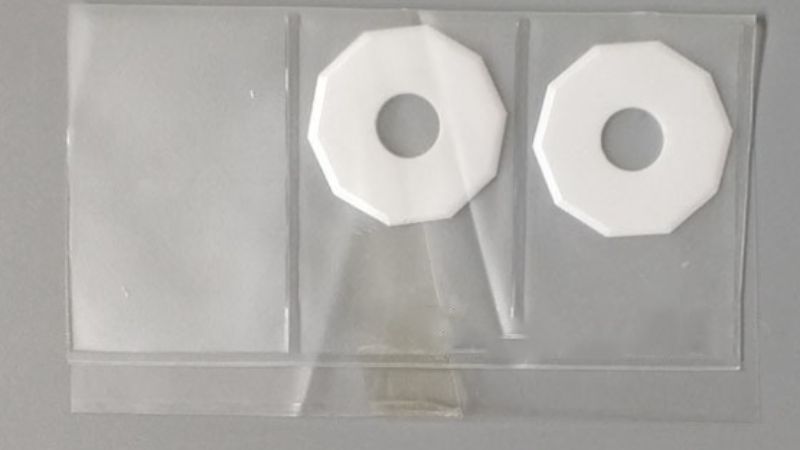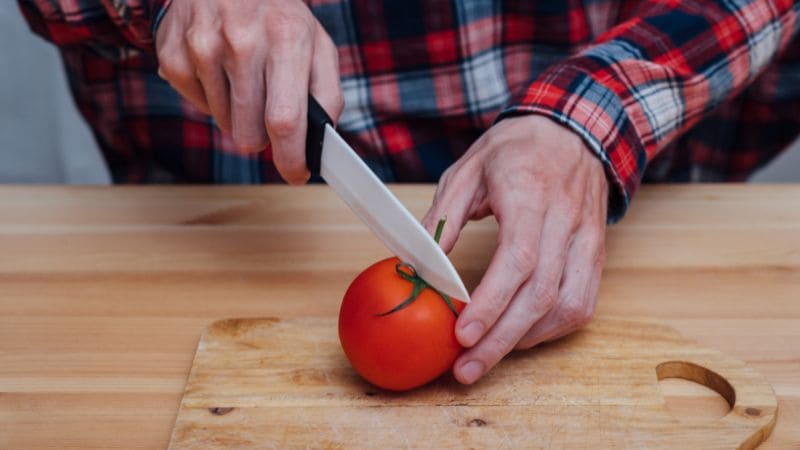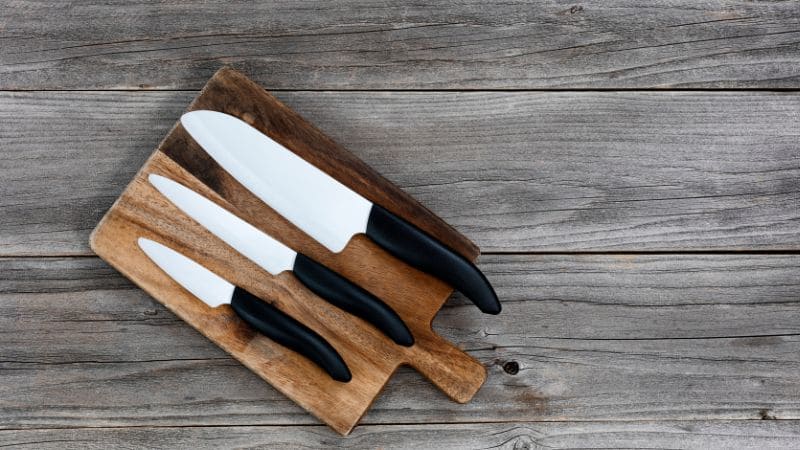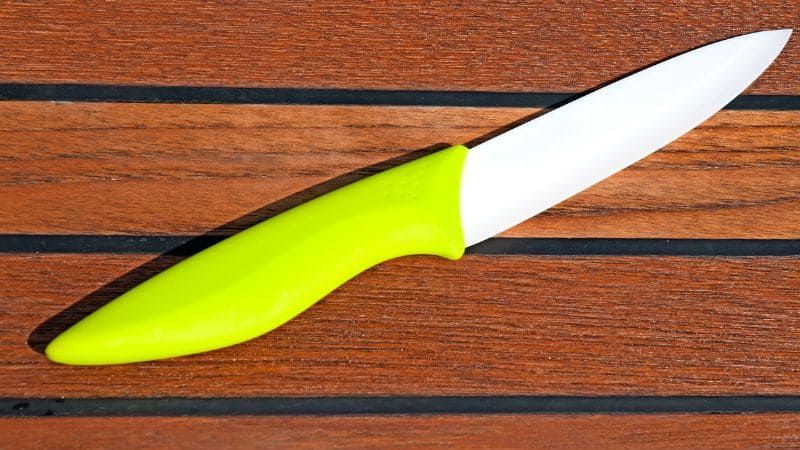Table of Contents
For a long while now, ceramic blades have become a household item for many people. They have been used from the kitchen, industrial settings, to crafting works because they are rust-free and corrosion-free and they are easy to maintain. So, it’s no surprise that they seem to outperform steel blades when it comes to edge retention. However, the question remains, just how long do they cut for, and what actually affects their lifespan?
Generally, a ceramic blade can cut for anywhere between one to two years with normal crafting activities. Light use can stretch its lifespan to three years. However, some professional kitchens and industrial environments cut them frequently. This results in the blades wearing and tearing in a time span of up to a year.
This article aims to tackle such concerns by discussing the important points worth noting when dealing with a ceramic blade. This enables people to know how to use the ceramic blades properly preventing them from ruining or damaging them.
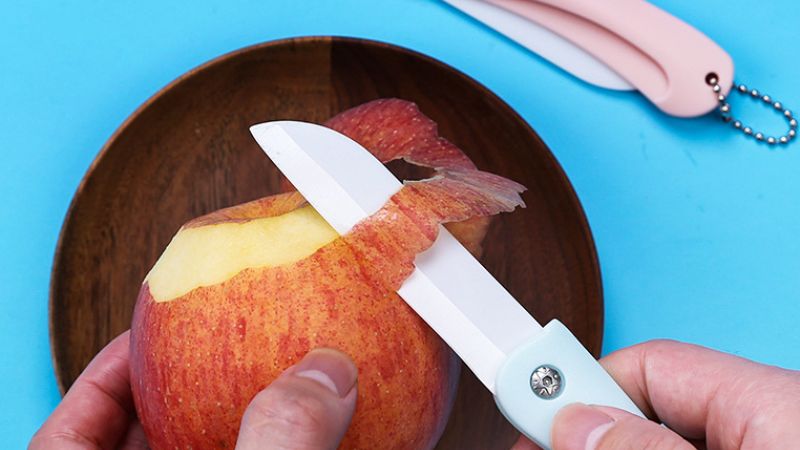
What Determines the Lifespan of Ceramic Blades?
The lifespan of ceramic blades is influenced by a combination of material properties, cutting techniques, and environmental conditions. Unlike steel blades, ceramic blades maintain their edge significantly longer, but this longevity depends on how they are used and maintained.
Material Composition – The Foundation of Longevity
Ceramic blades are primarily made from zirconium oxide (ZrO2), a material known for its exceptional hardness and wear resistance. On the Mohs hardness scale, zirconium oxide ranks at 8.2, compared to standard steel which typically falls between 4 and 6. This hardness allows ceramic blades to retain their sharp edge far longer than steel.
However, this hardness also introduces a trade-off—brittleness. Unlike steel, which bends under pressure, ceramic blades are prone to chipping or cracking if subjected to excessive force or dropped.
| Material | Hardness (Mohs Scale) | Edge Retention | Brittleness |
|---|---|---|---|
| Ceramic (Zirconium) | 8.2 | 10x longer | High |
| Stainless Steel | 4-6 | Shorter | Low (Flexible) |
| Carbon Steel | 7-7.5 | Medium | Moderate |
Key Fact: Zirconium oxide is used in industries like dental implants, aerospace, and industrial cutting—demonstrating its strength and resilience.
Cutting Applications – Matching the Blade to the Task
Ceramic blades excel when cutting soft to medium-hard materials, but their lifespan diminishes if used on improper surfaces.
- Soft Materials – Ideal for fruits, vegetables, and boneless meats.
- Fibrous Materials – Great for textiles, paper, and cardboard but causes gradual wear over time.
- Hard Materials – Cutting bones, frozen foods, or hard plastic can chip the blade immediately.
| Material Cut | Impact on Lifespan | Recommendation |
|---|---|---|
| Fruits, Vegetables | Minimal Wear | Safe for regular cutting tasks |
| Packaging, Paper, Textiles | Gradual Wear | Suitable with caution |
| Bones, Frozen Food | High Risk of Chipping | Avoid, switch to steel blades |
Frequency of Use – How Often You Cut Matters
Daily use inevitably wears down any blade, but ceramic blades outperform steel in edge retention over time.
- Occasional Use – Home users who cut fruits and vegetables a few times a week can expect blades to last 1 to 3 years.
- Frequent Use – In professional kitchens or factories, ceramic blades may need replacement or sharpening after 6 to 12 months.
| Usage Type | Estimated Lifespan |
|---|---|
| Light Home Use | 12 – 24 months |
| Professional Kitchen Use | 6 – 12 months |
| Industrial Use | 6 – 18 months |
Handling and Storage – Avoiding Accidental Damage
Proper handling and storage significantly extend the life of ceramic blades. A single drop on tile or concrete can render the blade useless.
- Blade Guards or Sheaths – Prevent blades from bumping into hard objects.
- Knife Blocks – Reduce exposure and accidental contact with utensils.
- Magnetic Strips – Keep blades separate but accessible.
Tip: Never store ceramic blades loosely in drawers. This increases the risk of chipping from contact with other tools.
| Storage Option | Effectiveness |
|---|---|
| Knife Block | High (Vertical Protection) |
| Blade Sheath | High (Full Edge Coverage) |
| Loose in Drawer | Low (Risk of Chipping) |
Environmental Conditions – The Hidden Factor
Ceramic blades are immune to rust and corrosion, unlike steel. However, temperature extremes or sudden shocks (like cutting frozen items) can weaken the material over time.
- Avoid Freezing Conditions – Cutting frozen food can cause micro-cracks.
- High Humidity – No impact on ceramic, but steel blades may degrade in the same environment.
Did You Know? Ceramic blades are favored in coastal and humid environments because they don’t rust or degrade like metal blades.
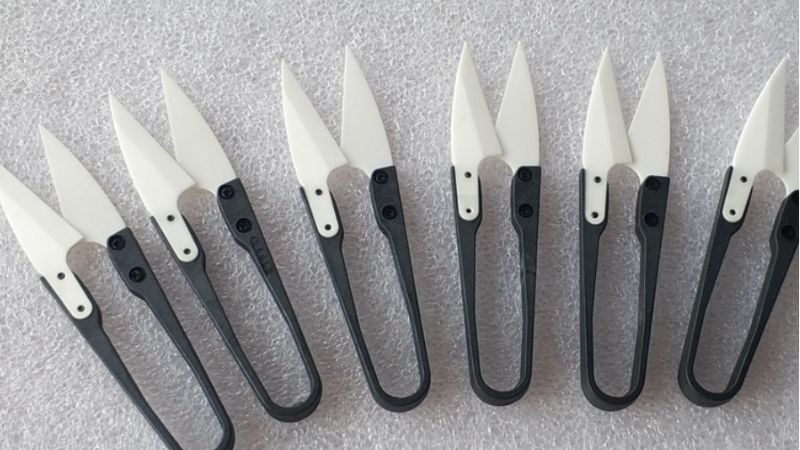
Average Lifespan of Ceramic Blades in Different Applications
Ceramic blades are favored across various industries and home settings due to their prolonged edge retention and resistance to rust and corrosion. However, the actual lifespan can vary significantly based on how and where the blades are used. Understanding the differences in application allows users to set realistic expectations and take steps to prolong blade longevity.
Kitchen Use – Home and Professional
Ceramic blades used in kitchens, particularly for slicing fruits, vegetables, and boneless meats, experience less wear compared to industrial applications.
- Home Use: Ceramic blades used in typical home kitchens can last between 12 to 24 months without needing sharpening. Light and precise cutting tasks, such as slicing soft produce, contribute to this extended longevity.
- Professional Use: In professional kitchens where ceramic knives endure heavier and more frequent use, blades may require sharpening or replacement every 6 to 12 months. The constant cutting, exposure to tougher surfaces, and high usage frequency shorten the lifespan.
Example: A home cook using a ceramic knife to slice fruits 2-3 times a week will likely maintain sharpness for two years, while a restaurant chef using the same knife daily may notice dullness after 8 months.
Industrial Use – Manufacturing and Packaging
Industrial applications involving ceramic blades typically focus on cutting packaging, films, textiles, and other fibrous materials. These environments are harsh, leading to faster wear compared to home use.
- Lifespan: On average, ceramic blades in industrial environments last between 6 to 18 months depending on usage frequency and the type of material being cut.
- High-Volume Cutting: Factories cutting repetitive materials daily, such as plastic wraps or fibers, may wear blades faster.
| Industrial Application | Average Lifespan | Contributing Factors |
|---|---|---|
| Textile Cutting | 12 to 18 months | Soft materials extend lifespan |
| Packaging & Film Cutting | 6 to 12 months | Repetitive cutting dulls the blade faster |
| Precision Manufacturing | 8 to 14 months | Limited chipping, frequent sharpening |
Crafting and Utility
Ceramic blades are often utilized in precision crafting, where clean, detailed cuts are required on softer materials such as paper, foam, and thin plastic sheets.
- Lifespan: Ceramic blades used for crafting can last 1 to 3 years depending on how frequently they are used. Precision cutting rarely dulls the blade as quickly as heavy-duty tasks.
| Crafting Task | Expected Lifespan |
|---|---|
| Paper and Fabric Cutting | 2 to 3 years |
| Foam and Soft Plastic Sheets | 1.5 to 2 years |
| Light-Duty DIY Projects | 3+ years |
Comparison Table: Lifespan by Application
| Application | Average Lifespan | Primary Wear Factors |
|---|---|---|
| Home Kitchen | 12 to 24 months | Soft cutting materials, light use |
| Professional Kitchen | 6 to 12 months | Heavy daily use, more abrasive materials |
| Industrial (Textile, Film) | 6 to 18 months | Continuous cutting, fibrous materials |
| Crafting/Utility | 1 to 3 years | Occasional light cutting tasks |
Factors That Affect How Long Ceramic Blades Last
The lifespan of ceramic blades is heavily influenced by a combination of cutting practices, material interactions, and environmental factors. Understanding these factors can help maximize blade longevity and maintain performance.
Cutting Surface
- Why It Matters: Cutting on hard surfaces like glass, granite, or stone leads to premature blade dulling or chipping. Unlike steel, ceramic blades lack flexibility, making them vulnerable to cracking under pressure.
- Best Practices: Use soft cutting boards made of wood, plastic, or bamboo. These materials provide cushioning, preserving the blade’s sharpness over time.
| Cutting Surface | Impact on Lifespan |
| Wood or Plastic Board | Extends lifespan |
| Glass, Stone, or Metal | Shortens lifespan (chipping risk) |
Type of Material Being Cut
- Soft Materials: Cutting fruits, vegetables, and boneless meats preserves the blade’s edge.
- Hard or Frozen Materials: Cutting bone, frozen food, or plastic can cause chips or breakage.
- Fibrous Materials: Textiles and cardboard wear down the blade over time, reducing sharpness.
| Material Cut | Effect on Blade Longevity |
| Fruits and Vegetables | Minimal Wear |
| Meat (Boneless) | Moderate Wear |
| Frozen Food, Bone | High Risk of Chipping |
| Textiles and Paper | Gradual Wear |
Frequency of Use
- Daily Use: Blades dull faster with heavy, repetitive cutting tasks.
- Occasional Use: Blades used occasionally for light tasks maintain sharpness for much longer.
| Frequency of Use | Expected Lifespan |
| Occasional Use | 1 to 3 years |
| Daily Use | 6 to 12 months |
| Heavy Industrial Use | 6 to 18 months |
Handling and Storage
- Improper Handling: Dropping or twisting ceramic blades can lead to chips or cracks.
- Storage Practices: Loose storage in drawers increases the risk of damage.
Solutions:
- Use protective sheaths or knife blocks.
- Store ceramic blades separately from steel utensils to prevent accidental contact.
| Storage Method | Impact on Lifespan |
| Knife Block/Sheath | Extends lifespan |
| Loose in Drawer | High risk of chipping |
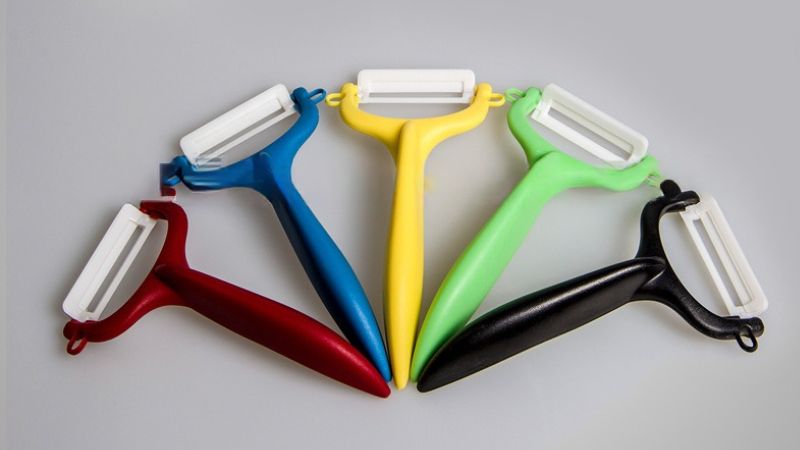
Signs That a Ceramic Blade Needs Replacement or Sharpening
Even the most durable ceramic blades eventually show signs of wear. Unlike steel blades, which gradually lose sharpness, ceramic blades often chip, crack, or develop micro-abrasions that affect performance. Recognizing the signs early can help prevent further damage and ensure safe, efficient cutting.
Diminished Cutting Performance
One of the earliest indicators that a ceramic blade needs attention is difficulty slicing through soft materials. A sharp ceramic blade should glide effortlessly through fruits, vegetables, and boneless meats. If increased force is required, it may be time for sharpening or replacement.
- Symptoms to Watch For:
- Resistance when slicing tomatoes or soft fruits.
- Tearing or uneven cuts.
- Dragging sensation during use.
| Sign | Cause |
|---|---|
| Difficulty cutting soft materials | Dull or chipped blade edge |
| Uneven slices | Micro-abrasions or nicks along the edge |
Visible Chips or Cracks
Ceramic blades, though incredibly hard, are brittle and prone to chipping if mishandled. Even a small chip can affect performance and pose safety risks. Chips can lead to rough cuts, food contamination, or even blade breakage.
- How to Check for Chips:
- Hold the blade under bright light and tilt it to inspect the edge for irregularities.
- Use a magnifying glass to detect micro-fractures or fine cracks.
| Chip Size | Action Required |
|---|---|
| Small (Micro-chip) | Sharpen blade using diamond rod. |
| Medium (Noticeable) | Consider professional sharpening. |
| Large (Fracture) | Replace blade immediately. |
Rough or Jagged Edge
A ceramic blade with a smooth, refined edge ensures precision cutting. Over time, constant use and friction can cause the blade to develop a rough texture along its cutting surface. This results in dragging and an uneven feel when slicing.
- How to Detect:
- Run a cloth gently along the blade’s edge. If the cloth snags, the blade edge may be compromised.
- Perform a paper slicing test—if the blade tears the paper rather than slicing cleanly, the edge is no longer smooth.
Blade Doesn’t “Bite” into Food
A hallmark of a dull blade is the inability to initiate cuts, often slipping off the surface of fruits or vegetables. Ceramic blades that lack grip or require multiple strokes are losing their cutting efficiency.
Audible Changes When Cutting
A subtle but noticeable change in sound during cutting may indicate edge wear. A ceramic blade that produces a grating or scraping noise signals friction points or chipped areas along the edge.
When to Replace vs. Sharpen
In many cases, a ceramic blade can be restored by sharpening, but not all damage can be repaired. Knowing when to replace the blade outright prevents further inconvenience.
| Condition | Solution |
|---|---|
| Dull with no chips | Sharpen blade |
| Micro-chipping | Sharpen or use professional service |
| Large cracks or fractures | Replace blade |
| Repeated sharpening with no effect | Full blade replacement |
Source: According to Kyocera Advanced Ceramics, ceramic knives can last several years if properly maintained. However, once significant chipping occurs, replacement is the safest and most effective solution.
Do Ceramic Blades Wear Out Completely?
Ceramic blades are well-regarded for their exceptional hardness and long-lasting edge retention, but they are not immune to wear. Over time, repeated use and exposure to tough materials will gradually dull even the finest ceramic blade. The key difference between ceramic and steel blades lies in how they wear down.
Unlike steel, which tends to bend and develop burrs, ceramic blades maintain their structure until they chip or fracture. This means that while ceramic blades can stay sharp for years, they will eventually reach a point where sharpening or replacement is necessary.
Why Do Ceramic Blades Wear Out?
- Micro-Chipping – Repeated use can lead to small chips along the blade edge, diminishing sharpness over time. These chips accumulate, creating rough, uneven cutting surfaces.
- Abrasion – Though rare, prolonged contact with hard or abrasive materials (like frozen foods or bones) accelerates edge degradation.
- Fatigue Cracks – Over time, tiny cracks can develop within the ceramic, eventually leading to larger fractures that compromise the blade entirely.
| Cause of Wear | Effect on Blade |
|---|---|
| Micro-Chipping | Uneven cuts, reduced precision |
| Abrasion | Gradual edge dulling |
| Fatigue Cracks | Sudden blade breakage |
Can Ceramic Blades Be Resharpened?
Yes, but sharpening ceramic blades requires specialized tools. Standard knife sharpeners are ineffective against ceramic’s hardness. Diamond sharpening tools are necessary to restore the blade’s fine edge. Alternatively, professional sharpening services offer more reliable results.
Expert Tip: Sharpen ceramic blades only when absolutely necessary. Over-sharpening can weaken the blade and shorten its lifespan.
- DIY Sharpening Tools: Diamond sharpening rods, electric sharpeners designed for ceramics.
- Professional Services: Many manufacturers, such as Kyocera, offer mail-in sharpening services for ceramic knives.
When to Replace a Ceramic Blade
There comes a point when sharpening is no longer effective. Signs that indicate replacement rather than sharpening include:
- Large Chips or Fractures – If a blade has significant damage along the edge, it’s often safer and more cost-effective to replace it.
- Cracks Spreading from the Edge – Structural cracks can lead to sudden breakage, which poses a safety risk.
- Repeated Sharpening Without Improvement – If sharpening no longer restores the blade’s performance, it’s time to replace it.
| Condition | Action Required |
| Small chips/micro-fractures | Sharpen |
| Large fractures or deep cracks | Replace blade |
| Blade snaps completely | Replace blade |
Source: According to America’s Test Kitchen, ceramic knives can maintain their edge 10 times longer than steel knives but must be treated with care to prevent wear. Once chipped or broken, replacement is often the best solution.
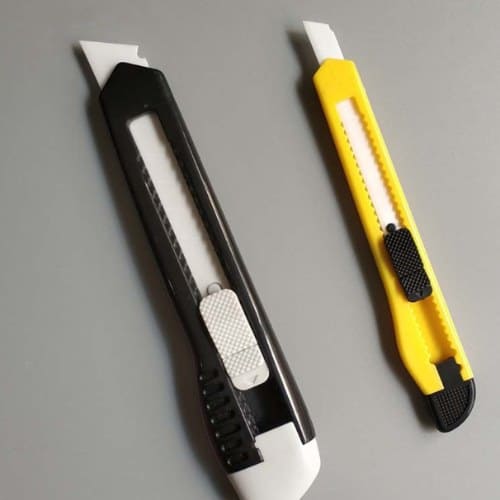
Ceramic Blades vs. Steel Blades: Lifespan Comparison
When it comes to choosing between ceramic and steel blades, understanding the differences in longevity, performance, and maintenance is essential. While both types of blades have their strengths, their lifespan varies depending on application, material composition, and care.
Edge Retention and Sharpness
Ceramic blades are known to retain their sharpness for far longer than steel blades. Due to their hardness, ceramic blades can stay sharp 10 times longer than steel blades. Steel blades, on the other hand, require frequent sharpening, particularly in high-use environments.
| Blade Type | Edge Retention |
|---|---|
| Ceramic Blade | Stays sharp 10x longer than steel |
| Stainless Steel Blade | Requires regular sharpening |
| Carbon Steel Blade | Holds edge but prone to rust |
Durability and Resistance to Damage
While ceramic blades excel in hardness and sharpness, they are more brittle than steel. This makes ceramic blades susceptible to chipping or snapping if dropped or used improperly. Steel blades, by contrast, are more flexible and less prone to chipping, making them ideal for heavy-duty tasks.
| Durability Factor | Ceramic Blade | Steel Blade |
| Brittleness | High (Can chip if dropped) | Low (Resists chipping and bending) |
| Impact Resistance | Low | High |
| Flexibility | Low | High |
Rust and Corrosion Resistance
Ceramic blades are immune to rust and corrosion since they are made from non-metallic materials. This makes them ideal for humid environments and food preparation. Steel blades, particularly carbon steel, require regular maintenance to prevent rust. Stainless steel blades resist rust but may still corrode over time.
| Blade Type | Rust Resistance |
| Ceramic Blade | 100% rust-proof |
| Stainless Steel Blade | Rust-resistant but not immune |
| Carbon Steel Blade | Prone to rust without maintenance |
Application Suitability
Ceramic blades are best suited for precision tasks such as slicing fruits, vegetables, and boneless meats. Steel blades, however, can handle heavier, more abrasive tasks like cutting through bones, frozen foods, and hard materials.
| Task | Best Blade Type |
| Slicing Soft Foods | Ceramic Blade |
| Cutting Hard or Frozen Foods | Steel Blade |
| General Purpose Use | Steel Blade |
| Precision Cutting | Ceramic Blade |
Maintenance Requirements
- Ceramic Blades: Minimal maintenance required, but they should be handled carefully to avoid chipping. Sharpening is rare but requires diamond sharpening tools.
- Steel Blades: Require frequent sharpening, regular oiling, and rust prevention treatments.
| Maintenance Task | Ceramic Blade | Steel Blade |
| Sharpening Frequency | Every 1-3 years | Every 3-6 months |
| Rust Prevention | Not required | Regular oiling needed |
| Cleaning | Hand wash, no abrasive pads | Hand wash, dry immediately |
Source: According to Cutlery and More, ceramic blades outperform steel in terms of edge retention but must be handled carefully to avoid breakage.
FAQ About Ceramic Blade Lifespan
How long do ceramic blades stay sharp?
Ceramic blades can stay sharp 10 times longer than steel blades. For home use, they typically remain sharp for 1 to 3 years, while in professional kitchens, their lifespan may range from 6 to 12 months with regular use.
Can ceramic blades be sharpened?
Yes, ceramic blades can be sharpened, but they require diamond sharpening tools or professional sharpening services. Standard sharpeners are ineffective against the hardness of ceramic materials.
What causes ceramic blades to dull?
Ceramic blades dull primarily due to micro-chipping, friction from hard surfaces, and frequent use on tough materials like bones or frozen foods. Cutting softer materials helps preserve sharpness.
How can I tell if my ceramic blade needs sharpening?
Signs include:
- Increased cutting resistance
- Jagged or uneven cuts
- Visible chips or cracks along the blade edge
Performing a paper slicing test is a simple way to check for dullness. If the blade tears the paper, it likely needs sharpening.
Can ceramic blades break easily?
While ceramic blades are extremely hard, they are also brittle. Dropping a ceramic knife on a hard surface or using it to twist or pry can result in chips or full blade breakage.
How do I prevent my ceramic blade from chipping?
- Use soft cutting surfaces (like wood or plastic).
- Avoid hard surfaces such as glass or granite.
- Store blades in protective sheaths or knife blocks to prevent contact with other utensils.
Conclusion
Ceramic blades provide exceptional sharpness, longevity, and rust resistance, making them ideal for precision cutting. With proper care, they can last years, outperforming steel blades in edge retention. However, they require careful handling to avoid chipping.
